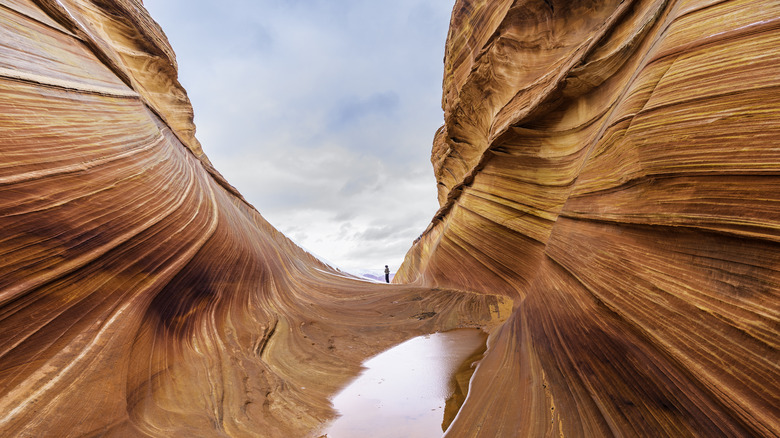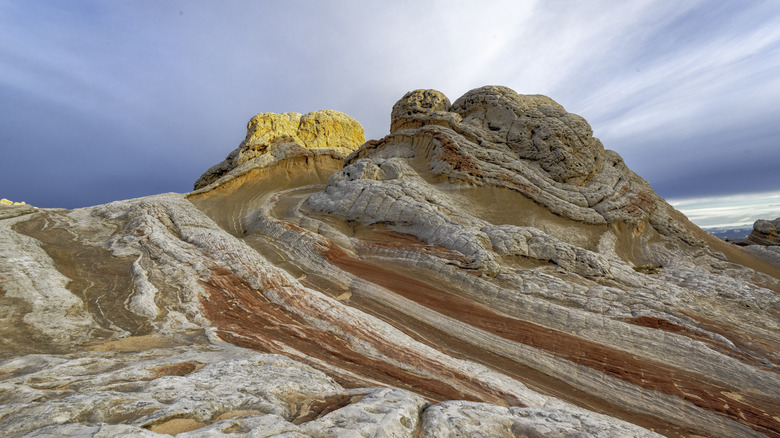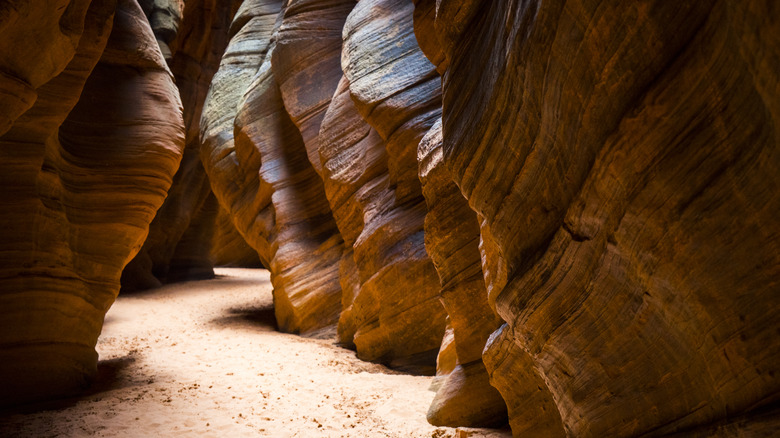Situated In Utah And Arizona Is A Lesser-Known, Fiery Slot Canyon Called One Of The World's Best
There's something awe-inspiring about the sheer scale and natural majesty of canyons. They leave us humbled, offering a stark reminder of our smallness against nature's grandeur. While not as vast as the Yarlung Tsangpo Grand Canyon in China, the deepest canyon in the world, a similarly jaw-dropping and picturesque destination can be found a little closer to home. Nestled between Coconino County in Arizona and Kane County in Utah lies the Paria Canyon-Vermilion Cliffs Wilderness, one of the best slot canyon hiking destinations in the United States.
Spanning over 110,000 acres, Paria River Canyon is a haven for outdoor enthusiasts seeking an escape into untamed nature, surrounded by breathtaking rocky landscapes. Hiking in this wilderness is no casual stroll; it's a multi-day adventure, with the White House Trail to Lees Ferry covering 38 miles of rugged terrain, river crossings, and some of the clearest, star-filled skies in the country to camp under.
Carved over millennia by the persistent flow of the Paria River, the canyons and rock formations here present visitors with incredible landscapes that feel otherworldly. The rich red and orange hues of the Vermilion Cliffs' Navajo sandstone have been shaped into mesmerizing crevices, narrow corridors, and towering walls. For photographers, the area provides an unparalleled backdrop of vibrant colors and dramatic scenery. Paria Canyon-Vermilion Cliffs Wilderness offers serenity, solitude, and stunning natural beauty, promising an unforgettable visit.
What to expect when hiking the Paria River Canyon
The White House Trail to Lees Ferry is a challenging yet rewarding route for those who want to truly immerse themselves in nature. Starting at the popular White House Trailhead, found about 31 miles away from Page, Arizona, the hike features some of the most impressive rock formations in the region, including the Paria River Canyon and the Paria Plateau. Along the way, hikers encounter dramatic slot canyons with sheer rock walls and narrow passages, some of which have ancient petroglyphs etched into their surfaces.
One highlight of this wilderness is the White Pocket, a series of swirling sandstone mounds and domes that look like a scene from a science fiction film. Another must-visit location is Coyote Buttes North, home to "The Wave," a world-famous sandstone formation renowned for its intricate, wave-like patterns and textures. Another favorite among seasoned hikers is Buckskin Gulch, which is the deepest slot canyon in the area and spans an impressive 16 miles.
In addition to its impressive geology, the region is teeming with wildlife. Bird enthusiasts might spot California condors, a critically endangered species that soars above the cliffs, as well as bald and golden eagles, great horned owls, and peregrine falcons. Other animals, including bighorn sheep, coyotes, porcupines, and even mountain lions, also inhabit the area, though close encounters with larger mammals are rare.
Planning your visit to the Paria Canyon-Vermilion Cliffs Wilderness
Unlike many state parks and national parks, the Paria Canyon-Vermilion Cliffs Wilderness remains uncrowded due to its remote location and limited daily permits. Only 20 visitors are allowed in per day, and large groups are not permitted, making it an ideal destination for those seeking solitude. Spring and fall are the best times to visit, as the weather is more favorable, but permits must be secured well in advance during these peak seasons to avoid disappointment. The remoteness of this area means visitors can enjoy some of the clearest night skies in the country, with no light pollution to obstruct views of the Milky Way and distant galaxies. Camping here is a rustic experience offering no formal campsites or amenities, though it's relatively easy to find plenty of established spots that previous hikers have used.
Hikers must prepare carefully for the journey. While not as perilous as the Bright Angel Trail in the Grand Canyon, this area is still pretty unforgiving for those who arrive unprepared, especially solo hikers who should review these safety tips before venturing out into the wilderness. Essentials include camping gear, a GPS device or map (as cell phone signal is unreliable), and appropriate clothing and footwear for desert-like conditions. Waterproof boots are especially important, as the trail involves multiple water crossings. There are three water springs along the route — at miles 12, 22, and 25 — where supplies can be replenished, but it's still critical to plan ahead, including remembering to bring your camera to capture the photogenic landscapes that define the wilderness.


